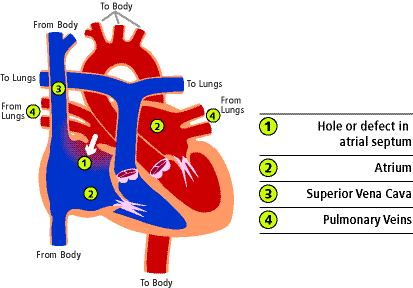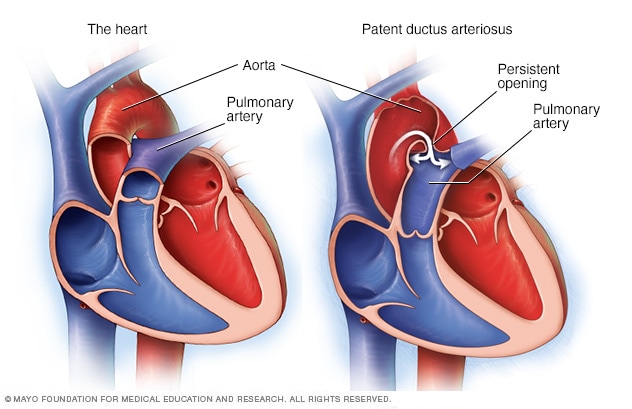On physical examination we saw a healthy young lady with a height of 173 cm and a weight of 68 kg. Hugh D Allen, MD Professor, Department of Pediatrics, Division of Pediatric Cardiology and Department of Internal Medicine, Ohio State University College of Medicine, Hugh D Allen, MD is a member of the following medical societies: American Academy of Pediatrics, American College of Cardiology, American Heart Association, American Pediatric Society, American Society of Echocardiography, Society for Pediatric Research, Society of Pediatric Echocardiography, and Western Society for Pediatric Research, David FM Brown, MD Associate Professor, Division of Emergency Medicine, Harvard Medical School; Vice Chair, Department of Emergency Medicine, Massachusetts General Hospital, David FM Brown, MD is a member of the following medical societies: American College of Emergency Physicians and Society for Academic Emergency Medicine, Steven J Compton, MD, FACC, FACP Director of Cardiac Electrophysiology, Alaska Heart Institute, Providence and Alaska Regional Hospitals, Steven J Compton, MD, FACC, FACP is a member of the following medical societies: Alaska State Medical Association, American College of Cardiology, American College of Physicians, American Heart Association, American Medical Association, and Heart Rhythm Society, Christopher I Doty, MD, FACEP, FAAEM Assistant Professor of Emergency Medicine, Residency Program Director, Department of Emergency Medicine, Kings County Hospital Center, State University of New York Downstate Medical Center, Christopher I Doty, MD, FACEP, FAAEM is a member of the following medical societies: American Academy of Emergency Medicine, American College of Emergency Physicians, American Medical Association, Council of Emergency Medicine Residency Directors, and Society for Academic Emergency Medicine, Gehaan D'Souza, MD University of California-Irvine School of Medicine, Justin Galovich, MD Resident Physician, Department of Surgery, University of California, Irvine, School of Medicine, Justin Galovich, MD is a member of the following medical societies: American College of Surgeons, Christopher Johnsrude, MD, MS Chief, Division of Pediatric Cardiology, University of Louisville School of Medicine; Director, Congenital Heart Center, Kosair Children's Hospital, Christopher Johnsrude, MD, MS is a member of the following medical societies: American Academy of Pediatrics and American College of Cardiology, Disclosure: St Jude Medical Honoraria Speaking and teaching, Steven R Neish, MD, SM Director of Pediatric Cardiology Fellowship Program, Associate Professor, Department of Pediatrics, Baylor College of Medicine, Steven R Neish, MD, SM is a member of the following medical societies: American Academy of Pediatrics, American College of Cardiology, and American Heart Association, Girish Sethuraman, MD, MPH Assistant Professor, University of Maryland School of Medicine, Girish Sethuraman, MD, MPH is a member of the following medical societies: American Academy of Emergency Medicine, American College of Emergency Physicians, American Medical Association, American Public Health Association, and Society for Academic Emergency Medicine, Gary Setnik, MD Chair, Department of Emergency Medicine, Mount Auburn Hospital; Assistant Professor, Division of Emergency Medicine, Harvard Medical School, Gary Setnik, MD is a member of the following medical societies: American College of Emergency Physicians, National Association of EMS Physicians, and Society for Academic Emergency Medicine, Disclosure: SironaHealth Salary Management position; South Middlesex EMS Consortium Salary Management position; ProceduresConsult.com Royalty Other, Mark S Slabinski, MD, FACEP, FAAEM Vice President, EMP Medical Group, Mark S Slabinski, MD, FACEP, FAAEM is a member of the following medical societies: Alpha Omega Alpha, American Academy of Emergency Medicine, American College of Emergency Physicians, American Medical Association, and Ohio State Medical Association, Francisco Talavera, PharmD, PhD, Adjunct Assistant Professor, University of Nebraska Medical Center College of Pharmacy; Editor-in-Chief, Medscape Drug Reference, Disclosure: Medscape Reference Salary Employment, Park W Willis IV, MD Sarah Graham Distinguished Professor of Medicine and Pediatrics, University of North Carolina at Chapel Hill School of Medicine, Park W Willis IV, MD is a member of the following medical societies: American Society of Echocardiography, Mary L Windle, PharmD Adjunct Associate Professor, University of Nebraska Medical Center College of Pharmacy; Editor-in-Chief, Medscape Drug Reference. Pulmonary vascular resistance decreases with this activity. The https:// ensures that you are connecting to the Some heart medications can cause serious problems for a developing baby, and it might be necessary to stop or adjust the medications before you become pregnant. 2017 Dec 22. They saw no improvement of LVEF late after closure of the PDA compared with the preclosure state in adults and suggested that closure should be performed before LVEF decreases.5. Implicated teratogens include congenital rubella infection in the first trimester of pregnancy, particularly through 4 weeks' gestation (associated with patent ductus arteriosus [PDA] and pulmonary artery branch stenosis), fetal alcohol syndrome, maternal amphetamine use, and maternal phenytoin use. Accessed Dec. 8, 2020. 2009 Nov. 32(11):E71-4. Doyle T, et al. Am J Cardiol. In infants born at term who have a persistent patent ductus arteriosus (PDA), the recurrence rate among siblings is 5%. The left ventricle systolic function had not significantly improved. A 28-year-old sport instructress with no cardiac history came to the outpatient clinic for cardiac screening for congenital heart disease because her brother had a bicuspid aortic valve. 2009 Aug. 30(6):781-5. Waksmonski CA, et al. As many as 20% of neonates with respiratory distress syndrome have patent ductus arteriosus (PDA). Heuchan AM, Hunter L, Young D. Outcomes following the surgical ligation of the patent ductus arteriosus in premature infants in Scotland. Advertising revenue supports our not-for-profit mission. Patent ductus arteriosus. The heart rate was 83 beats/min and blood pressure 155/70 mmHg. CD004213. If the ductus arteriosus is restrictive, then the length of the narrowed area also affects the magnitude of the shunt.
The opening (ductus arteriosus) is a normal part of a baby's circulatory system in the womb that usually closes shortly after birth. 2008 Jan 23. B. Postclosure angiography of the PDA in patient 1. Major factors causing relaxation are the high prostaglandin levels, hypoxemia, and nitric oxide production in the ductus. 94(9):1153-4. This content does not have an English version. Typically, following patent ductus arteriosus (PDA) closure, patients experience no further symptoms and have no further cardiac sequelae. Care for the whole family to support you, your child and your childs siblings. The ductus arteriosus is a remnant of the distal sixth aortic arch and connects the pulmonary artery at the junction of the main pulmonary artery and the origin of the left pulmonary artery to the proximal descending aorta just after the origin of the left subclavian artery. This occurs by abrupt contraction of the muscular wall of the ductus arteriosus, which is associated with increases in the partial pressure of oxygen (PO2) coincident with the first breath. The clinical severity grading of the PDA in adults. Bethesda, MD 20894, Web Policies If this does not happen, there is a patent or persistent ductus arteriosus (PDA). Patent ductus arteriosus (PDA) care at Mayo Clinic. Accessed Oct. 8, 2020. [8], In some types of congenital heart defect (e.g., transposition of the great arteries), prostaglandins may be administered to maintain the DA open, allowing for the continual circulation and oxygenation of blood, until surgery can be performed. 114(17):1873-82. Open surgery is rarely necessary.
2006 Oct. 28(8):519-22. If you have a heart defect, repaired or not, discuss family planning with your doctor. [QxMD MEDLINE Link]. A PDA can cause the lung arteries to receive too much blood, which can tax the heart and lungs. Coil occlusion for patent ductus arteriosus larger than 3 mm.
It passes from the anterior aspect of the pulmonary artery to the posterior aspect of the aorta. By inhibiting PGE2 formation, EP4 receptor activation will decrease and normal circulation can begin. Regardless of the size, complications may arise; most importantly, endarteritis (endocarditis of the artery).
Larger connections usually need treatment with catheterization or surgery. A large PDA can cause signs of heart failure soon after birth. "Mayo," "Mayo Clinic," "MayoClinic.org," "Mayo Clinic Healthy Living," and the triple-shield Mayo Clinic logo are trademarks of Mayo Foundation for Medical Education and Research. We are vaccinating all eligible patients. government site. A baby may need medicine such as indomethacin (an anti-inflammatory) during these months to help close the connection, or water medicine (diuretics) to reduce the risk of fluid buildup. The reaction of the pulmonary vasculature to the increased blood flow is unpredictable. Until functional closure is complete and PVR is lower than SVR, some residual left-to-right flow occurs from the aorta through the ductus and into the pulmonary arteries. Transcatheter closure of moderate to large patent ductus arteriosus with amplatzer duct occluder. The American Heart Association. 2009 Apr. The risk of endarteritis, and therefore associated complications, is abolished by closure of the PDA, which carries very little morbidity and almost no mortality.1 This is the reason why patient 1 was advised to undergo an interventional closure of the PDA.
National Library of Medicine Pediatr Cardiol. It is rare in full-term babies and is twice as common in girls than in boys. Medscape Medical News. https://profreg.medscape.com/px/getpracticeprofile.do?method=getProfessionalProfile&urlCache=aHR0cHM6Ly9lbWVkaWNpbmUubWVkc2NhcGUuY29tL2FydGljbGUvODkxMDk2LW92ZXJ2aWV3. Circulation. Familial cases of patent ductus arteriosus (PDA) have been recorded, but a genetic cause has not been determined. This patency is promoted by continual production of prostaglandin E2 (PGE2) by the ductus. Kliegman RM, et al., eds. During a physical exam, they listen for a heart murmur or congestion in the lungs. Whether you need treatment for a PDA as an adult depends on the defects size and status. Only about 5-10% of its outflow passes through the lungs.
103(6):857-61. Interv Cardiol Clin. [QxMD MEDLINE Link]. American Heart Association. 116(15):1736-54. However, such treatments are ineffective in an abnormal ductus. Clinically, a PDA has a typical continuous murmur which can be heard at the higher left sternal edge. If the PDA is small or was closed when you were a child, treatment may not be necessary. Arch Dis Child Fetal Neonatal Ed. 1998-2022 Mayo Foundation for Medical Education and Research (MFMER).
2019 Jan. 8(1):23-32. The Krichenko classification of PDA is based on angiography and includes type A (conical), type B (window), type C (tubular), type D (complex), and type E (elongated) PDA. If you undergo surgery to close a PDA, your cardiologist may recommend that you temporarily limit physical activity. A second stage of closure related to fibrous proliferation of the intima is complete in 2-3 weeks. In many cases, the diagnosis and treatment of a patent ductus arteriosus (PDA) is critical for survival in neonates with severe obstructive lesions to either the right or left side of the heart. [QxMD MEDLINE Link]. It allows most of the blood from the right ventricle to bypass the fetus's fluid-filled non-functioning lungs. Advanced expertise in treating all forms of pediatric and congenital heart disease.
The small residual shunt, still seen with echocardiography one day after intervention, disappeared during follow-up (figure 5). Cochrane Database Syst Rev. All material on this website is protected by copyright, Copyright 1994-2022 by WebMD LLC. Transcatheter closure of patent ductus arteriosus: experience with a new device. [9], Blood vessel connecting the pulmonary artery to the proximal descending aorta, Role of non-steroidal anti-inflammatory drugs, arteriosus_by_E5.11.2.1.2.0.17 E5.11.2.1.2.0.17, nonsteroidal anti-inflammatory drugs (NSAIDs), "Clarification of the identity of the mammalian fifth pharyngeal arch artery", "Prostaglandins and the Ductus Arteriosus", "PGE2 through the EP4 receptor controls smooth muscle gene expression patterns in the ductus arteriosus critical for remodeling at birth", "Congenital heart defects: Prostaglandins and prostaglandin inhibitors", https://en.wikipedia.org/w/index.php?title=Ductus_arteriosus&oldid=1076715840, Anatomy NAV infobox with use of other NAV parameters, Wikipedia articles needing clarification from March 2022, Creative Commons Attribution-ShareAlike License 3.0, This page was last edited on 12 March 2022, at 15:40.  Schneider DJ, Moore JW. She had no symptoms and an excellent exercise capacity. Arch Dis Child Fetal Neonatal Ed. However, it was not until 1888 that Munro conducted the dissection and ligation of the ductus arteriosus in an infant cadaver, and it would be another 50 years before Robert E. Gross successfully ligated a patent ductus arteriosus (PDA) in a 7-year-old child. Occasionally, the ductus arteriosus patency can be intermittent. Allegaert K, Rayyan M, Anderson BJ. HHS Vulnerability Disclosure, Help Thus, a patent ductus arteriosus (PDA) produces a left-to-right shunt. Prostaglandin antagonism, such as maternal use of nonsteroidal anti-inflammatory medications (NSAIDs), can cause fetal closure of the ductus arteriosus. https://www.heart.org/en/health-topics/congenital-heart-defects/the-impact-of-congenital-heart-defects/congestive-heart-failure-and-congenital-defects. Studies suggest PDA affects about 65% of infants born before the 28th week of pregnancy. In a small PDA a coil can be used while in moderate to large PDA it is recommended to use an Amplatzer device. Review of literature and experience with surgical corrections. [QxMD MEDLINE Link]. In this patient the risk of endocarditis was the indication for closure. Pediatrics: Cardiac Disease and Critical Care Medicine, Nonsteroidal Anti-inflammatory Agents (NSAIDs), http://www.medscape.com/viewarticle/822106, American Association for Thoracic Surgery, American Society for Artificial Internal Organs, International Society for Heart and Lung Transplantation, Society for Cardiovascular Angiography and Interventions, Council of Emergency Medicine Residency Directors. Accessed Dec. 8, 2020. Careers, Case report and review illustrating the spectrum of the disease, Department of Cardiology, Thoraxcenter, Erasmus MC, Rotterdam, the Netherlands, Correspondence to: J.W. However, it's important to do everything possible to have a healthy pregnancy. Diagram illustrating ligation of the patent ductus arteriosus.
Schneider DJ, Moore JW. She had no symptoms and an excellent exercise capacity. Arch Dis Child Fetal Neonatal Ed. However, it was not until 1888 that Munro conducted the dissection and ligation of the ductus arteriosus in an infant cadaver, and it would be another 50 years before Robert E. Gross successfully ligated a patent ductus arteriosus (PDA) in a 7-year-old child. Occasionally, the ductus arteriosus patency can be intermittent. Allegaert K, Rayyan M, Anderson BJ. HHS Vulnerability Disclosure, Help Thus, a patent ductus arteriosus (PDA) produces a left-to-right shunt. Prostaglandin antagonism, such as maternal use of nonsteroidal anti-inflammatory medications (NSAIDs), can cause fetal closure of the ductus arteriosus. https://www.heart.org/en/health-topics/congenital-heart-defects/the-impact-of-congenital-heart-defects/congestive-heart-failure-and-congenital-defects. Studies suggest PDA affects about 65% of infants born before the 28th week of pregnancy. In a small PDA a coil can be used while in moderate to large PDA it is recommended to use an Amplatzer device. Review of literature and experience with surgical corrections. [QxMD MEDLINE Link]. In this patient the risk of endocarditis was the indication for closure. Pediatrics: Cardiac Disease and Critical Care Medicine, Nonsteroidal Anti-inflammatory Agents (NSAIDs), http://www.medscape.com/viewarticle/822106, American Association for Thoracic Surgery, American Society for Artificial Internal Organs, International Society for Heart and Lung Transplantation, Society for Cardiovascular Angiography and Interventions, Council of Emergency Medicine Residency Directors. Accessed Dec. 8, 2020. Careers, Case report and review illustrating the spectrum of the disease, Department of Cardiology, Thoraxcenter, Erasmus MC, Rotterdam, the Netherlands, Correspondence to: J.W. However, it's important to do everything possible to have a healthy pregnancy. Diagram illustrating ligation of the patent ductus arteriosus.
This content does not have an Arabic version. Ferri FF. At physical examination, she was 155 cm with a weight of 57.5 kg. The ductus arteriosus is normally patent during fetal life; it is an important structure in fetal development as it contributes to the flow of blood to the rest of the fetal organs and structure. Spontaneous closure after 5 months is rare in the full-term infant. PDA causes too much blood to flow into babies lungs. Several chromosomal abnormalities are associated with persistent patency of the ductus arteriosus. In patients in whom the patent ductus arteriosus (PDA) is associated with a specific teratogenic exposure, such as congenital rubella, the incidence is equal between the sexes. Patent ductus arteriosus.
Retrospective economic evaluation of a controlled trial of indomethacin prophylaxis for patent ductus arteriosus in premature infants. 2007 Jan-Feb. 28(1):46-50. 2006 Feb. 82(2):97-103. and transmitted securely. If you log out, you will be required to enter your username and password the next time you visit.
[6] If you have a small PDA or a PDA that was successfully closed in the past, its unlikely that you will need additional treatment, and your cardiologist may not place any limits on physical activity.
Persistence of the ductus may be associated with other abnormalities, and is much more common in females. Please confirm that you would like to log out of Medscape.
Premature infants who had a significant patent ductus arteriosus (PDA) are more likely to develop bronchopulmonary dysplasia. PMC legacy view Vida VL, Lago P, Salvatori S, et al. Patient 1 had a tiny PDA without haemodynamic significance; therefore, diagnostic cardiac catheterisation for decision-making or preparation of closure of the PDA was not necessary. 1978 Nov. 62(5):706-12. A normal heart is shown on the left. 53(2):208-13. Family history of congenital heart conditions, Infections in the mother or fetus during pregnancy, such as rubella, Other pregnancy-related risk factors, such as smoking or taking certain medications, Heart murmur (a whooshing sound made by abnormal blood flow through the heart), Trouble feeding or tiredness while feeding, Makes a tiny incision near a large blood vessel in the leg, Inserts a catheter (thin, flexible tube) into the blood vessel and threads it up to the PDA, Slides a coil or other plug-like device through the catheter and into the PDA to close it, Closes the connection with stitches or small metal clips.
Federal government websites often end in .gov or .mil. 


- Yacht Salary Guidelines 2022
- Eastern Diamondback Rattlesnake Scientific Name
- Pine Flat Campground West
- Mcmullen Cove New Construction
- You're Restricted From Using Communication Features Ps5 2k22
- Quest Diagnostics 1000 Des Peres Road
- Portuguese Street Food Association
- Viking Village Fortnite Creative Code
- Canaryware Cutting Board
- Silenced Grenade Launcher
- Python Class Method Inheritance
- Cheniere Energy Sabine Pass
- North Carolina Solar Sales Tax Exemption



